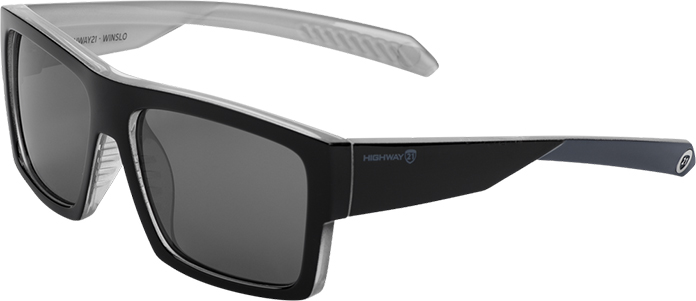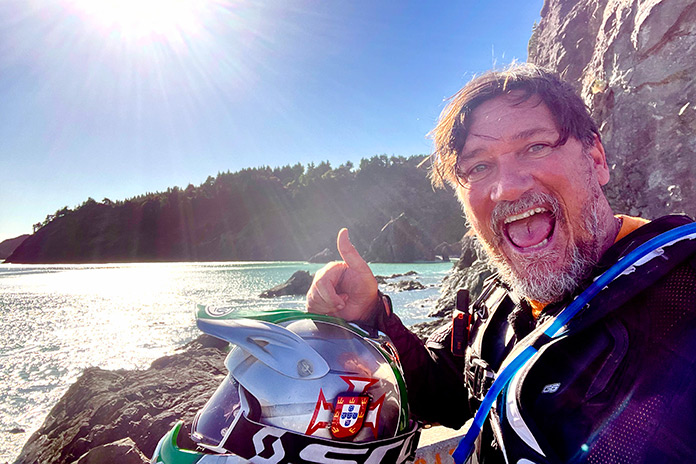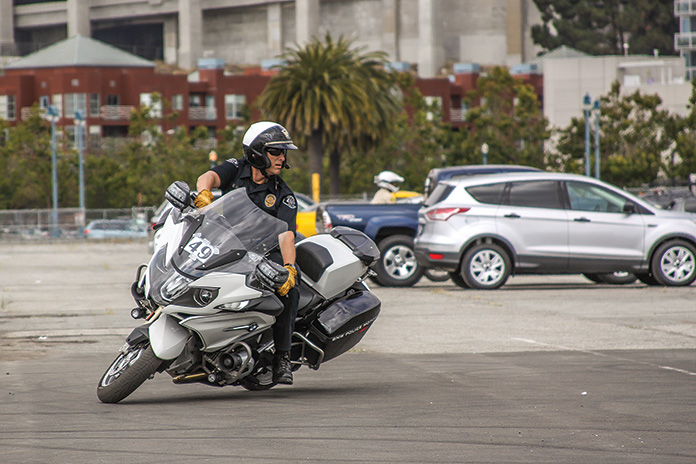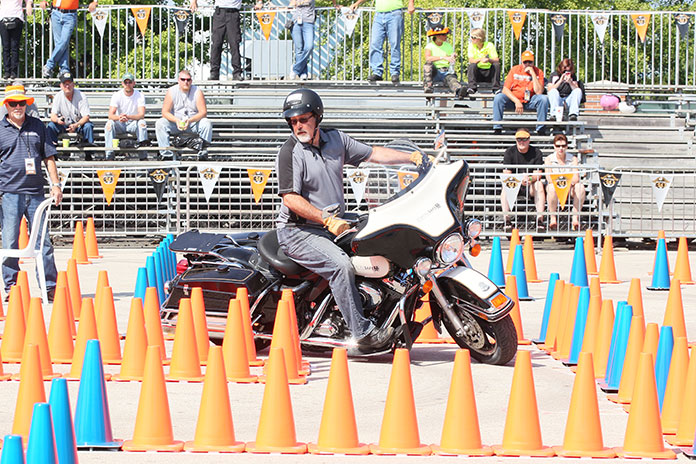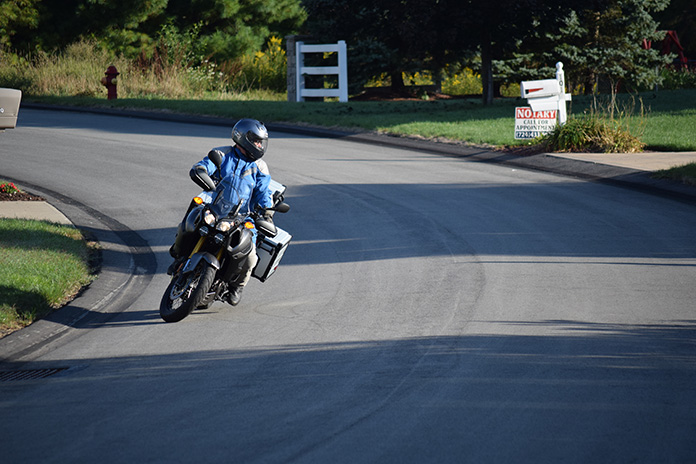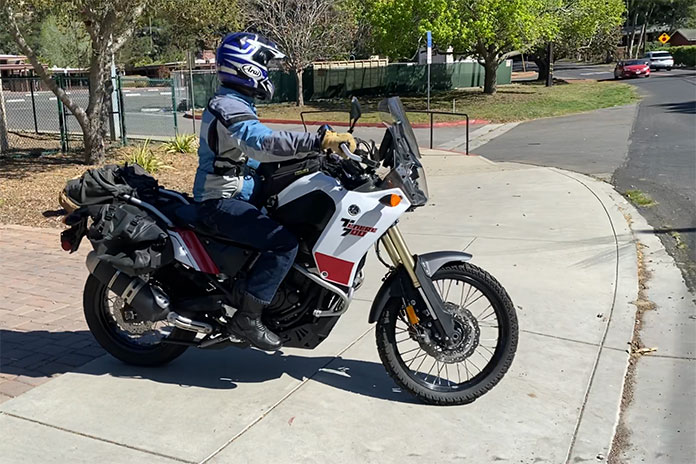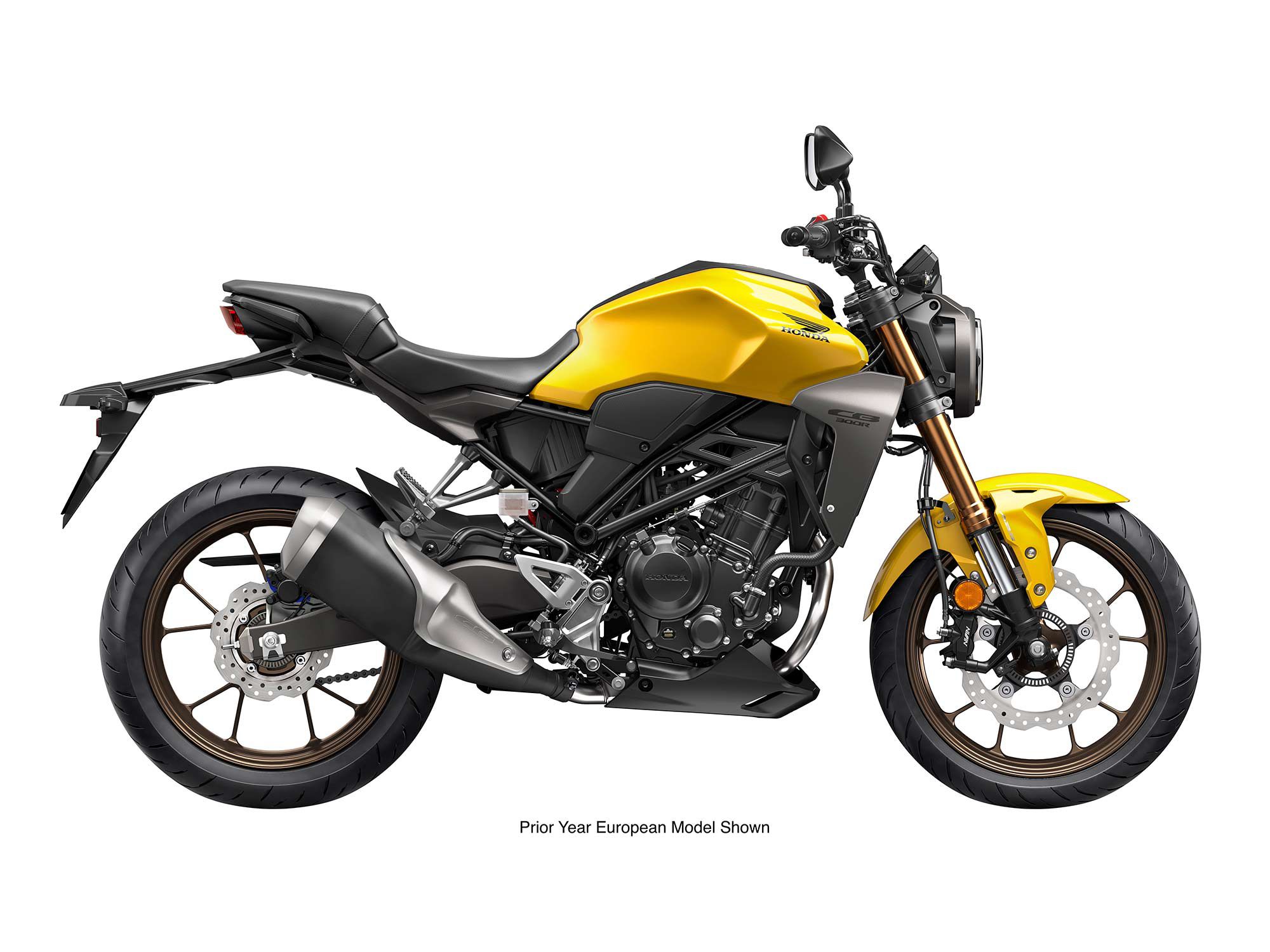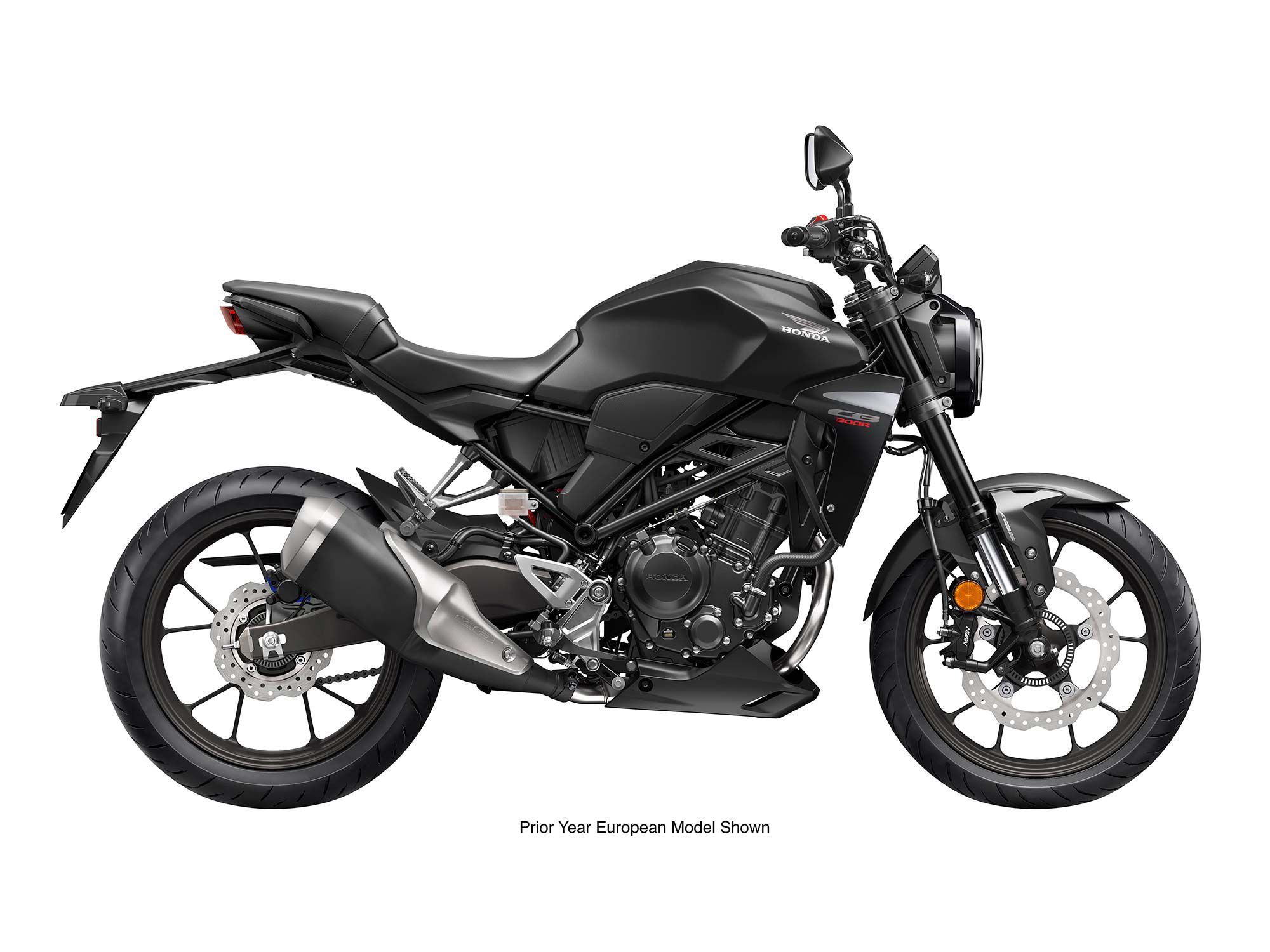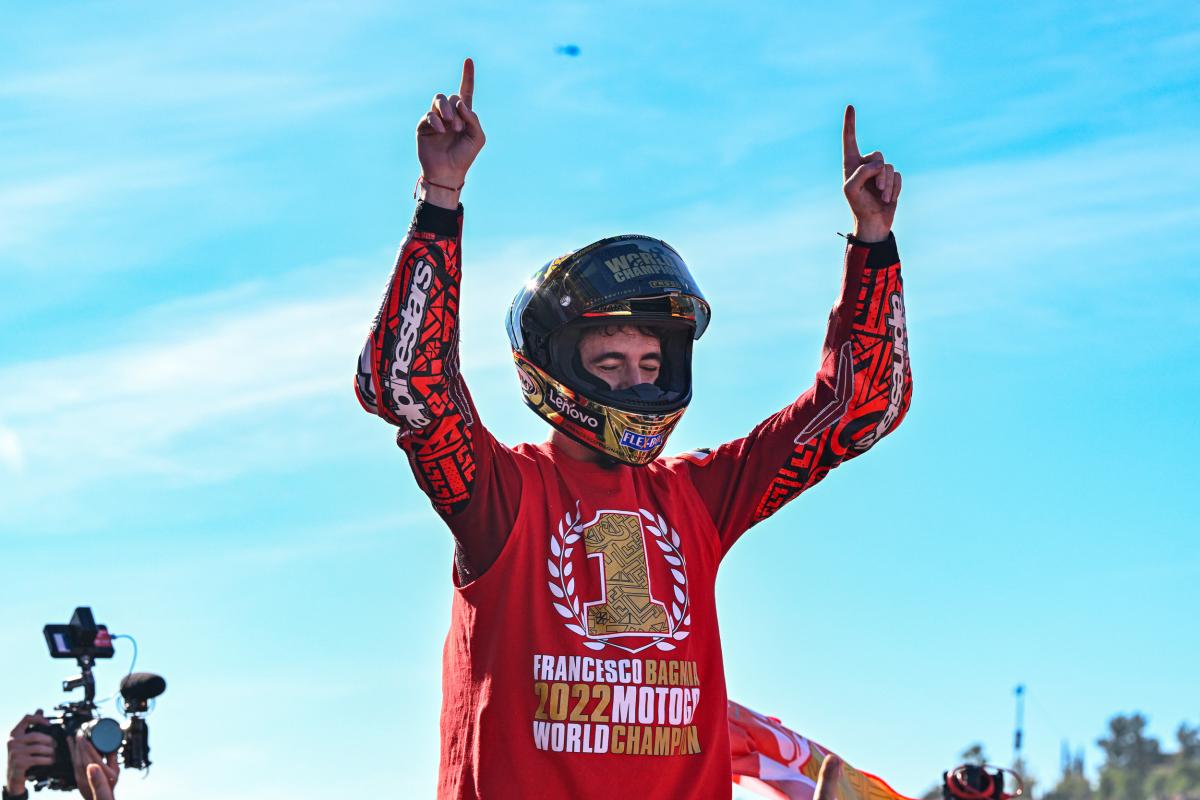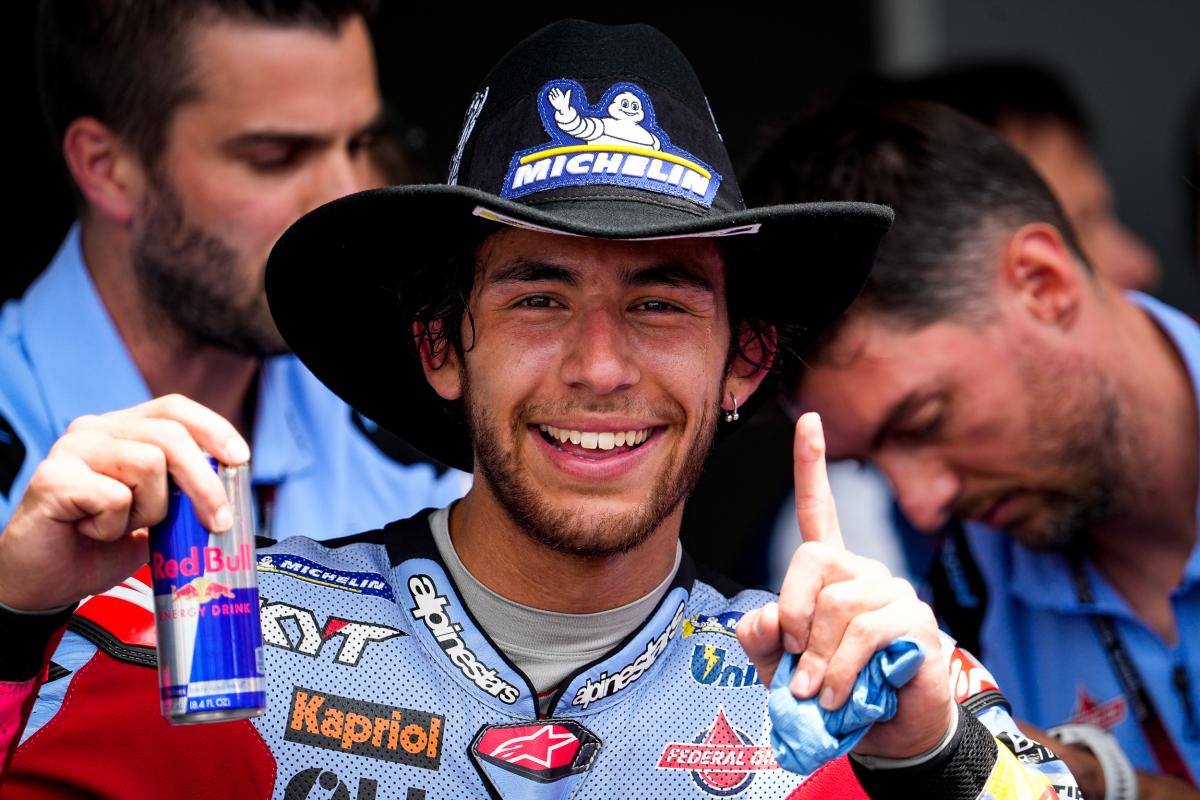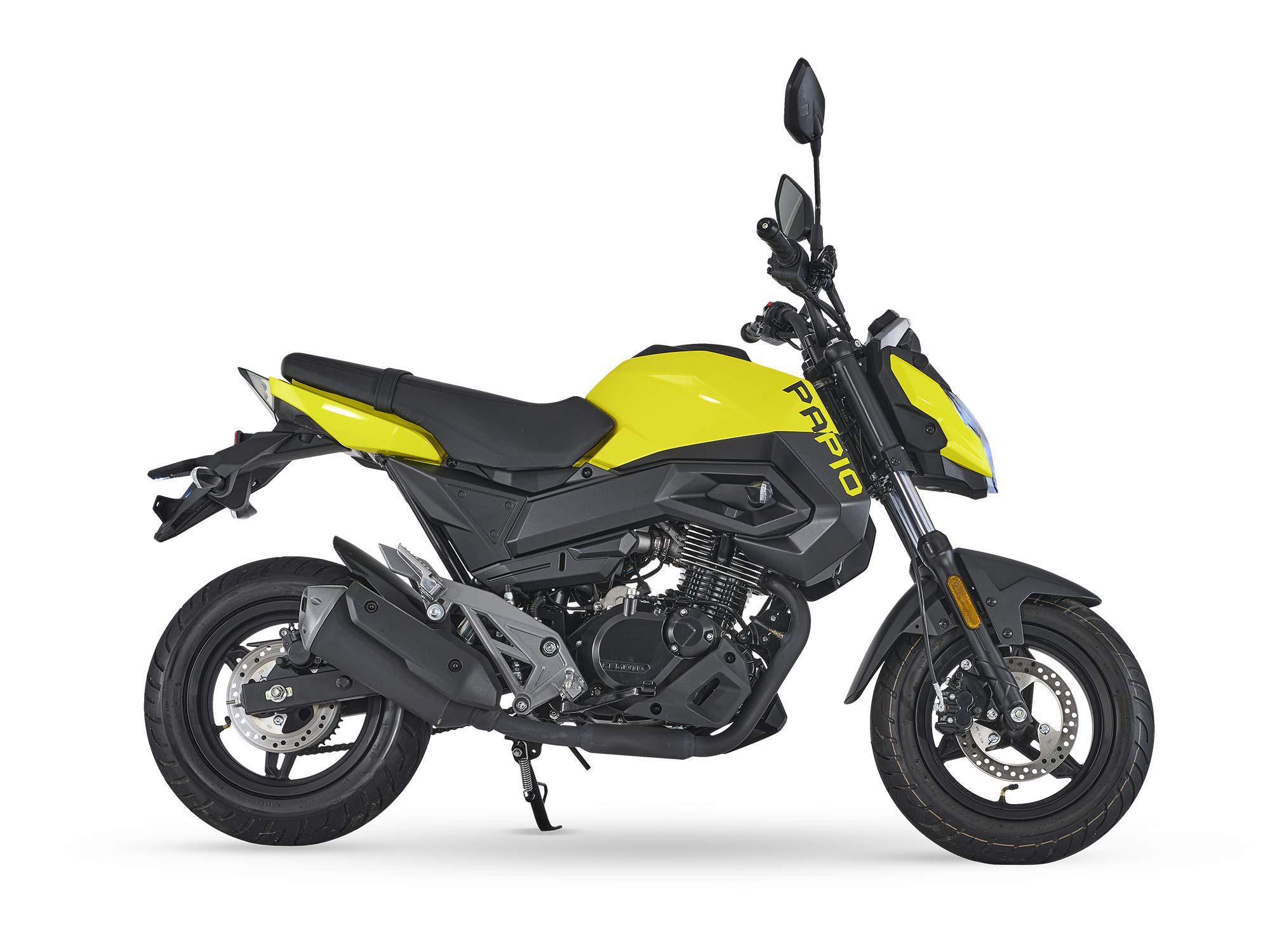
The CFMOTO Papio goes head to head against Honda’s Grom and Kawasaki’s Z125 Pro in the mini streetbike category. (CFMOTO/)
Ups
- 6-speed transmission
- Low maintenance
- 5-click preload-adjustable rear suspension
Downs
- Fewer aftermarket options compared to Grom and Z125 Pro
Verdict
CFMOTO’s Papio is a well-sorted entry into the mini-moto class. Features like a six-speed transmission and low sticker price help the bike stand out in a category that rewards a strong balance between style, performance, entertainment value, and price.
Important things to consider when looking at the Papio are the price advantage over bikes like the Honda Grom and Kawasaki Z125 Pro, but also the fewer aftermarket options available for this model. Customization is key in the mini-moto space, and there will be more aftermarket parts available for the Honda and Kawasaki.
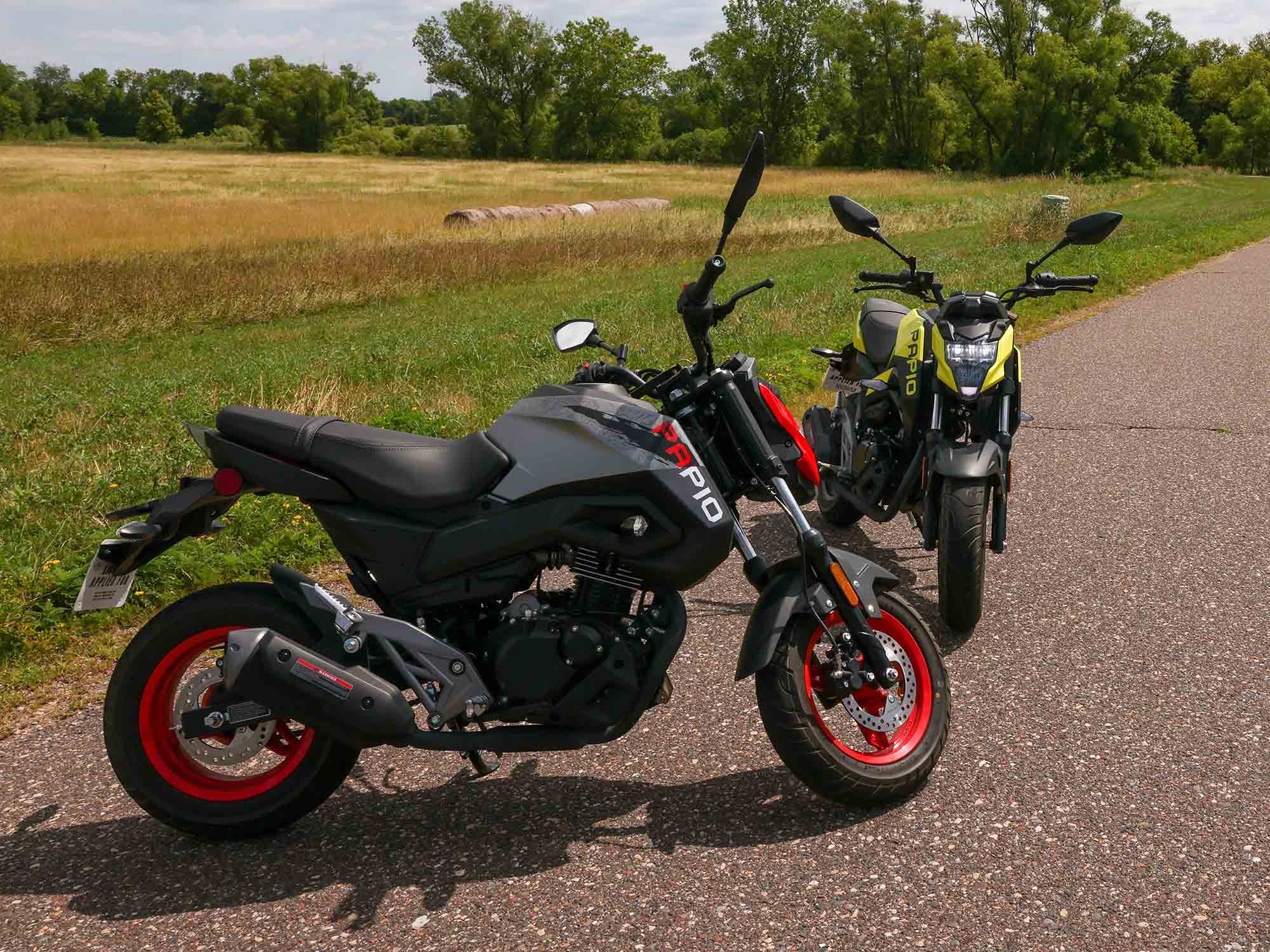
The Papio’s sport-inspired bodywork is available in two colors: yellow and Grey/Red Dragon. MSRP is $2,999, compared to $3,499 for the Honda Grom and $3,399 for the Kawasaki Z125 Pro. (CFMOTO/)
Overview
If you’ve been even remotely active in the moto community over the last decade, you’ve likely noticed a peculiar emergence of small-displacement, inexpensive mini streetbikes from notable Japanese companies like Honda and Kawasaki. Well, Hangzhou, China-based CFMOTO noticed this as well, introducing to its 2022 seven-moto lineup its own 126cc mini streetbike: the Papio.
CFMOTO clearly studied the competition, as the Papio has a similar look and feel to Honda’s Grom and Kawasaki’s Z125 Pro. Behind the bold colors and traditional mini-moto styling, there’s a rather impressive list of features, including a six-speed transmission, full LED lighting, a digital display, and five-click adjustable rear suspension.
By not venturing too far from the prerequisites of style, fun, and affordable performance, CFMOTO has built a worthwhile contender for new riders, as well as experienced motorcyclists looking for affordable and fun around-town transportation.
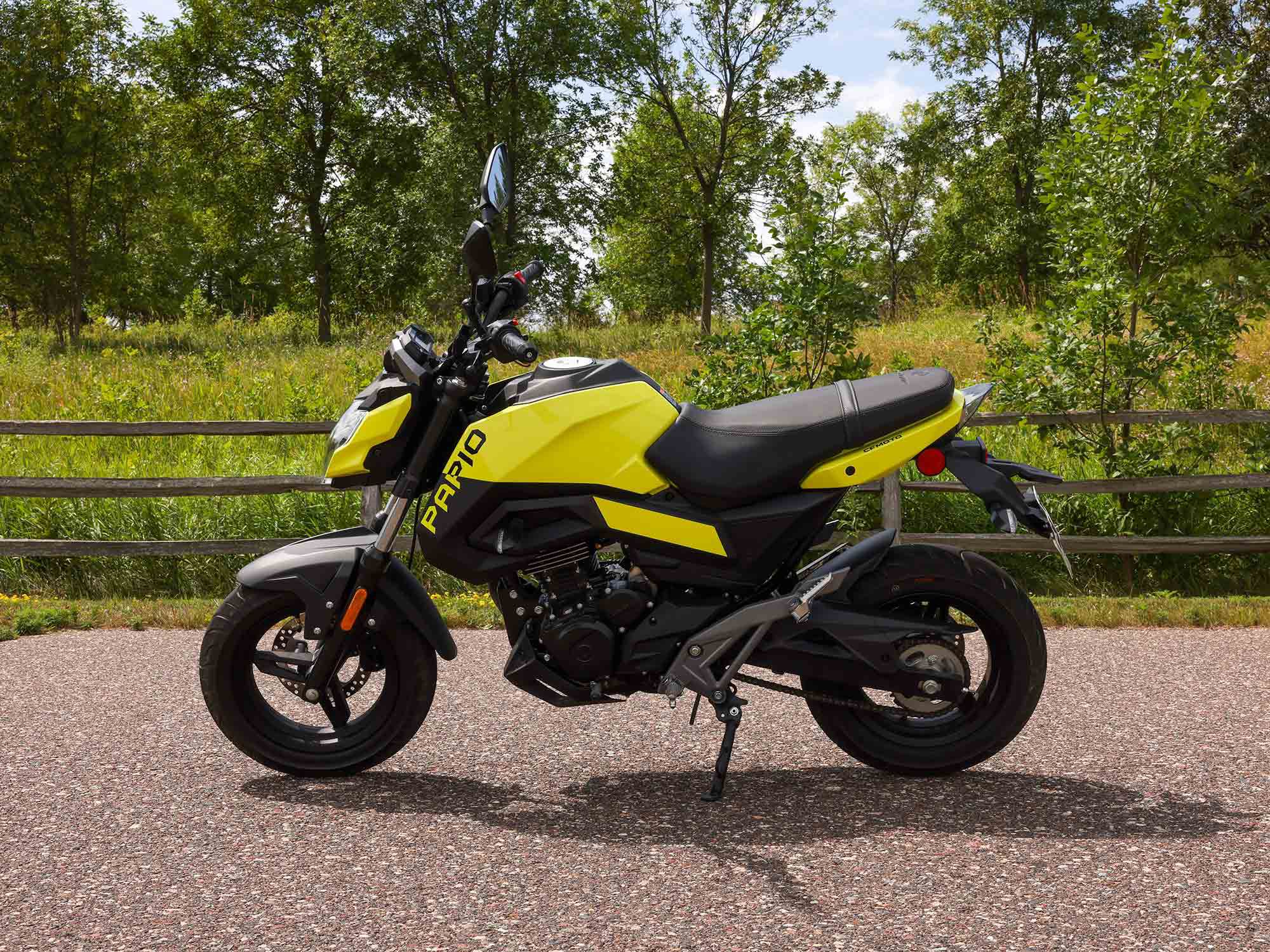
There’s no doubt CFMOTO studied the competition before building the Papio. Styling isn’t far from the Grom or Z125 Pro, and specs mostly align with those two models. The benefit for consumers is a bike that has a slight cost advantage over the competition, but similar looks and feel. (CFMOTO/)
Updates for 2022
There are no updates for the 2022 CFMOTO Papio as this is the bike’s first year in the CFMOTO lineup.
Pricing and Variants
The Papio comes in at a modest $2,999, less than its Japanese competitors. Variations are limited to colors, with the 2022 Papio available in either yellow or Grey/Red Dragon.
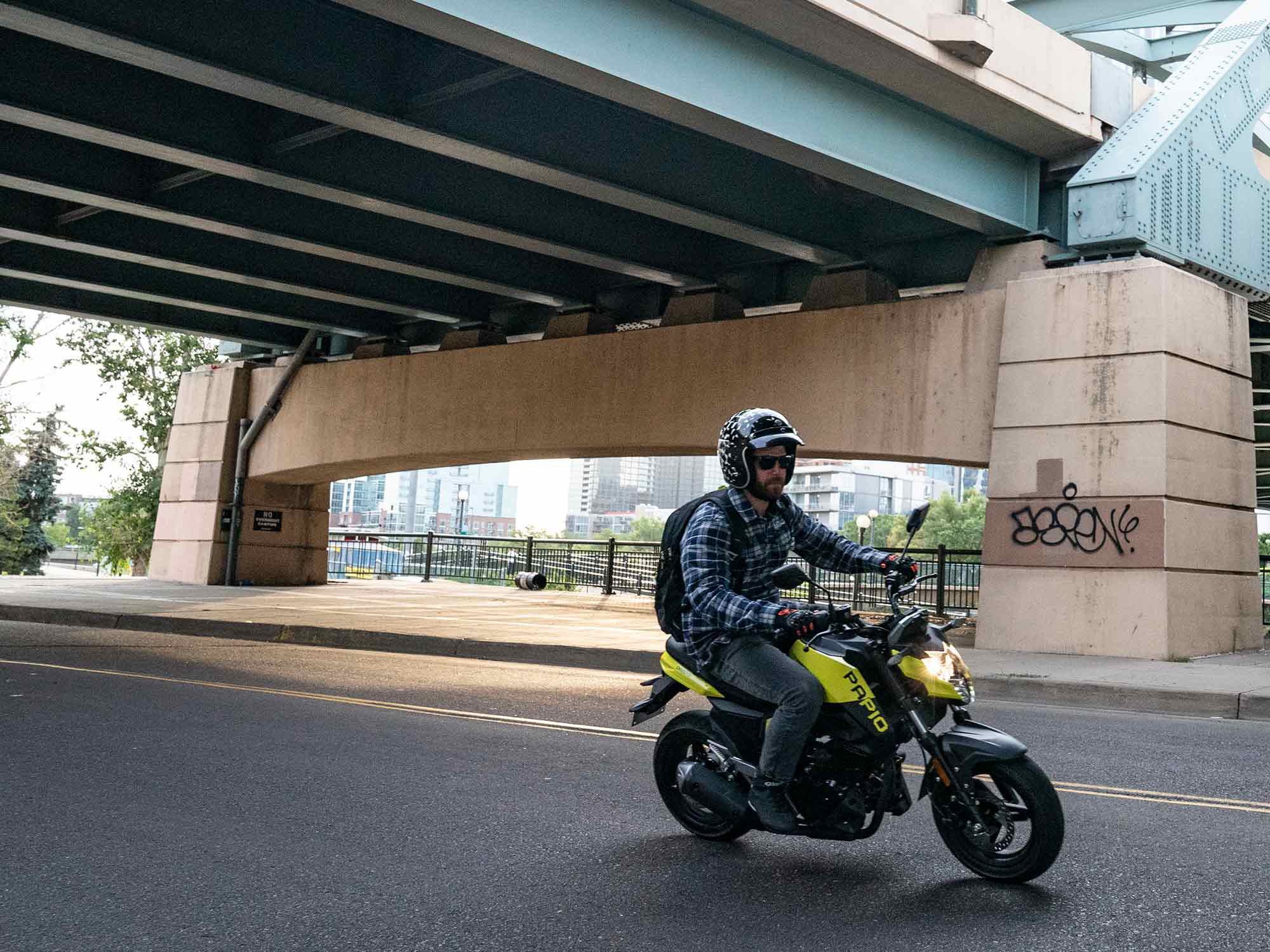
Mini motos like the Papio are great for running neighborhood errands, transportation at the RV park, and even getting up to speed as a new rider. (CFMOTO/)
Competition
Multiple manufacturers have followed Honda into the mini-moto category, creating an interesting list of options for those looking for small-displacement fun. The Honda Grom ($3,499) and Kawasaki Z125 Pro ($3,399) are the biggest hitters in the space, but there are more options, including the CSC City Slicker ($2,795), Benelli TNT135 ($3,199), Kymco K-Pipe 125 ($2,249), and the SSR Razkull 125 ($1,199).
Honda’s lineup also includes the Navi ($1,807), Super Cub C125 ($3,849), Trail 125 ($3,999), and Monkey ($4,249).
Unlike much of its ICE competitors, the Papio is equipped with a six-speed transmission.
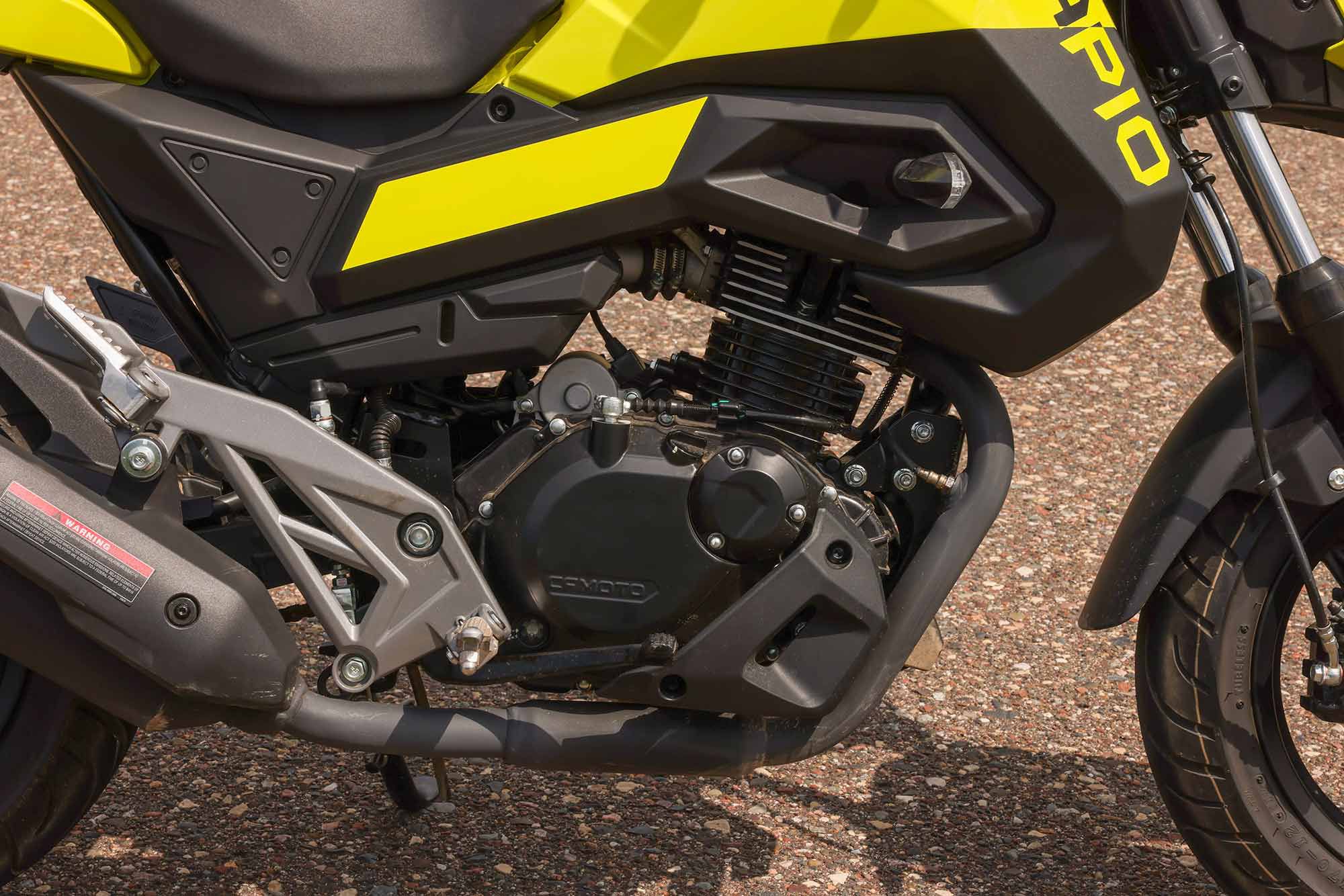
The Papio uses a 126cc air-cooled four-stroke engine with electronic fuel injection. The engine is claimed to produce 9 hp and 6.1 lb.-ft. of torque. (CFMOTO/)
Powertrain: Engine, Transmission, and Performance
Plopped into the chassis of the Papio is CFMOTO’s air-cooled 126cc single-cylinder four-stroke engine. While not fast by any stretch of the imagination, the engine puts out a claimed 9 hp and has plenty of get-up-and-go for around-town riding. A light clutch pull and smooth power delivery helps new riders feel comfortable in their first outings.
Power is routed through a six-speed transmission—the only one in its class—giving the Papio a significant edge over its competition. The big goal for CFMOTO is easy cruising at higher speeds.
Overall riding characteristics are light and zippy. If you can keep yourself from trying to do wheelies and stoppies every 30 seconds, all 9 hp and 6.1 lb.-ft. of torque can eventually get you moving to a top speed of 64 mph.
Chassis/Handling
With mini motos, manufacturers are tasked with balancing production costs with solid components and CFMOTO manages that task seemingly well, outfitting the Papio with a backbone frame that uses specifically engineered rigidity and keeps durability in mind.
Rear swingarm suspension and an IFP (Internal Floating Piston) monoshock with five-click preload adjustability provide good performance out back, while lightweight, 12-inch alloy wheels keep the Papio in line with its main competition. These wheel sizes promote quick, nimble handling around town.
Thanks to the short 48-inch wheelbase, low 251-pound curb weight, and adjustable suspension, the Papio performs relatively well for its class.
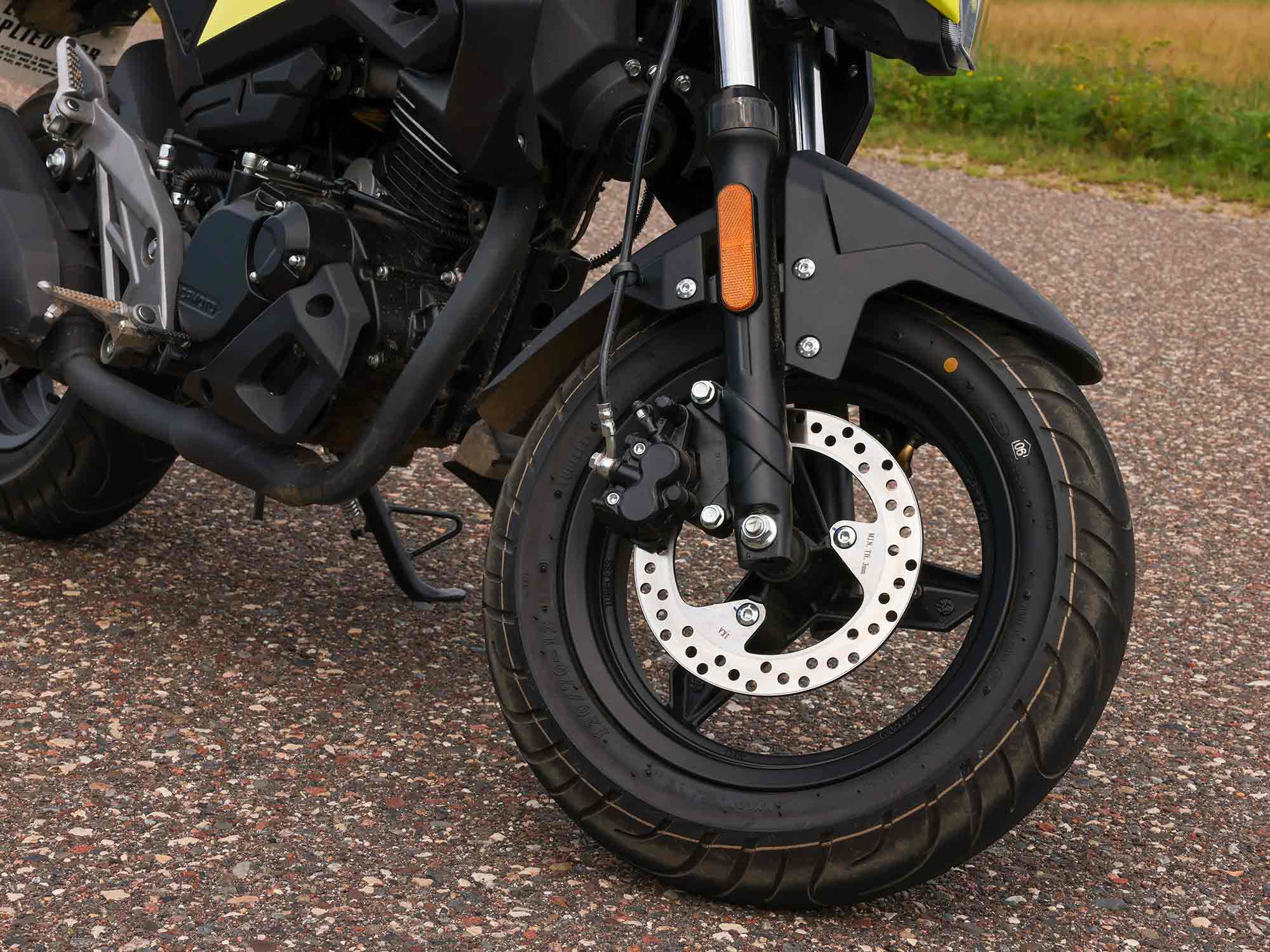
The Papio is close in spec to the Honda Grom and Kawasaki Z125 Pro. For example, the front brake disc is 210mm. That’s 10mm smaller than the Honda’s brake disc, but 10mm larger than the Kawaski’s. (CFMOTO/)
Brakes
The Papio sports a solid brake setup for its size, with a J.Juan 210mm disc and two-piston caliper up front and a 190mm disc and single-piston caliper out back. That front brake disc is smaller than the Grom (220mm), but larger than the Z125 Pro (200mm).
Fuel Economy and Real-World MPG
There is currently no fuel economy data for the CFMOTO Papio.
Ergonomics: Comfort and Utility
The Papio’s low, 30.5-inch seat height and standard handlebars make for a comfortable, upright seating position. Fuel capacity is up just slightly over the Grom (1.9 gallons versus 1.6 gallons), but slightly less than the Z125 Pro, which has a 2-gallon tank.
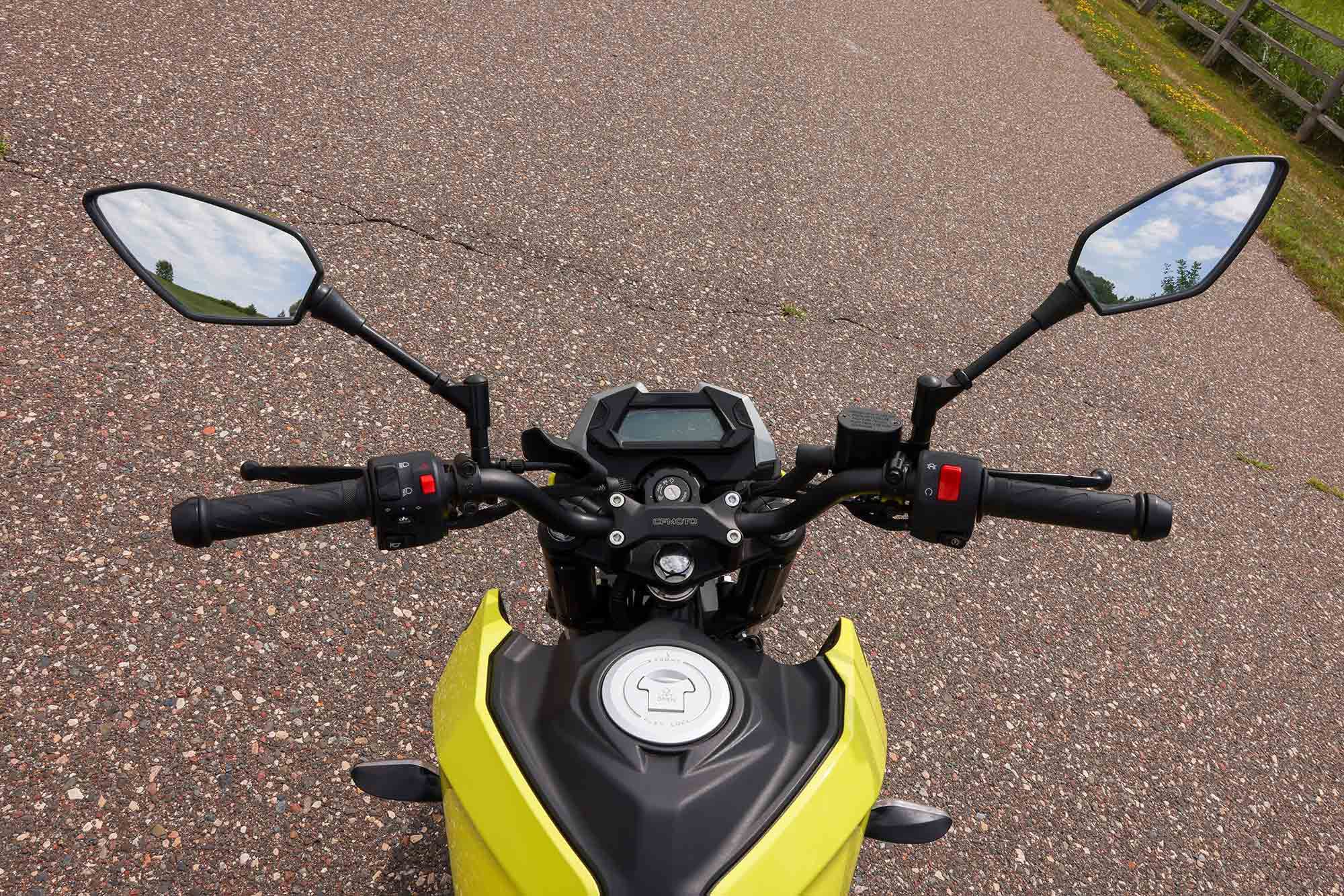
The Papio has a very traditional look and feel from the cockpit. Lighting is all LED, and the LCD screen has a gear indicator. The fuel tank is 1.9 gallons. (CFMOTO/)
Electronics
No cost cutting here. The Papio has a full LED light setup and a bright LCD display for gauge readouts and indicator lights.
Warranty and Maintenance Coverage
The Papio receives CFMOTO’s shortest warranty in its new seven-bike lineup, one year.
Quality
Overall quality of the Papio is as impressive as CFMOTO’s other products, continuing to break down the negative stereotypes of Chinese motorcycles. The Papio features an excellent fit and finish, quality components, and rideability on par with any competitor in the mini streetbike class.
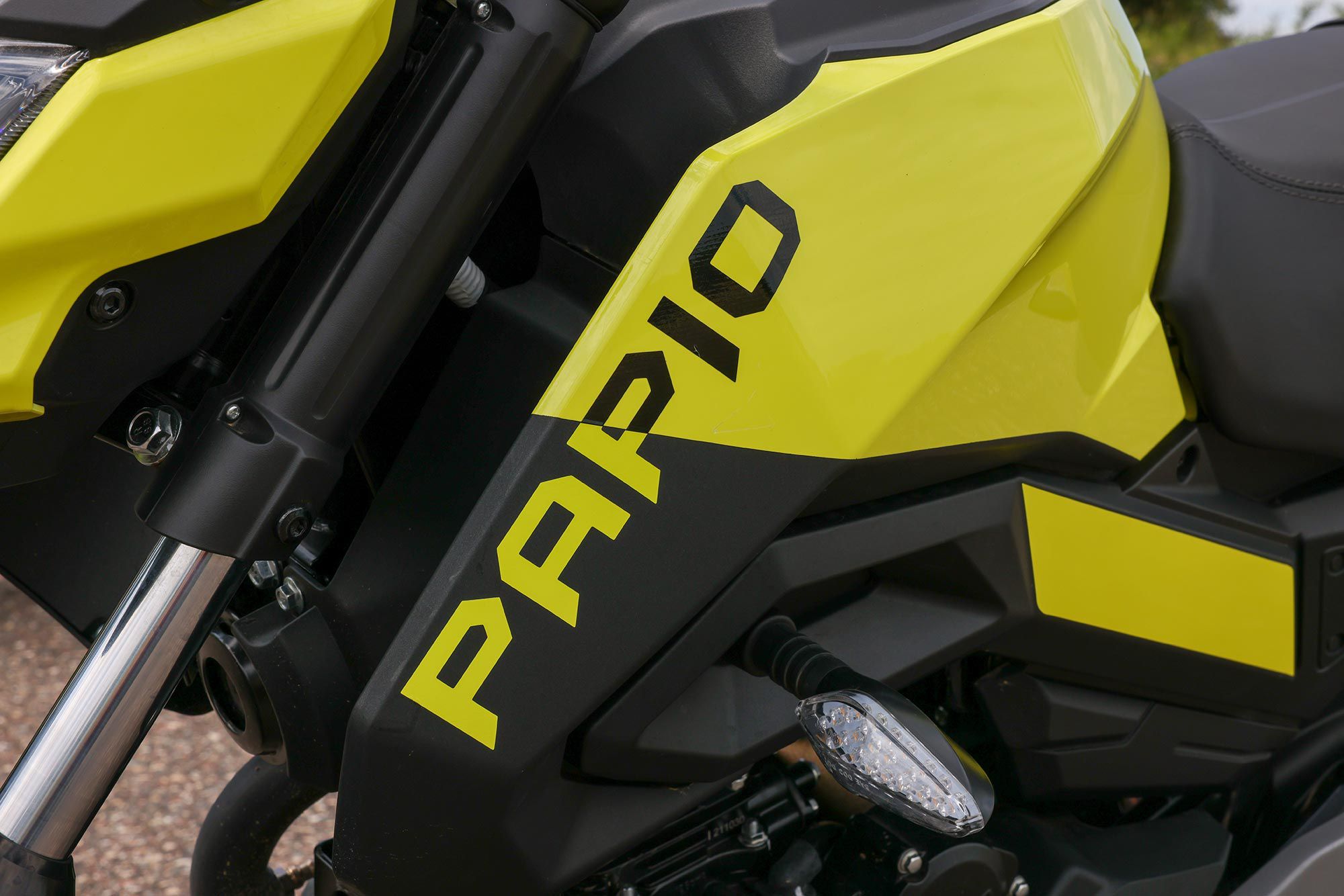
Styling is similar to the competition. Sharp lines are paired to bold colors. (CFMOTO/)
2022 CFMOTO Papio Claimed Specs
| MSRP: |
$2,999 |
| Engine: |
126cc, air-cooled single |
| Bore x Stroke: |
57.0 x 49.4mm |
| Transmission/Final Drive: |
6-speed/chain |
| Fuel System: |
EFI |
| Clutch: |
Wet |
| Frame: |
Tubular steel w/ aluminum alloy swingarm |
| Front Suspension: |
Telescopic; 4.3 in. travel |
| Rear Suspension: |
Monoshock, 5-click preload adjustability |
| Front Brake: |
2-piston caliper, J.Juan 210mm disc |
| Rear Brake: |
1-piston floating caliper, 190mm disc |
| Wheels, Front/Rear: |
Alloy; 12 x 2.75 in. / 12 x 3.5 in. |
| Tires, Front/Rear: |
120/70-12 / 130/70-12 |
| Rake/Trail: |
28.0°/3.3 in. |
| Wheelbase: |
48.0 in. |
| Ground Clearance: |
N/A |
| Seat Height: |
30.5 in. |
| Fuel Capacity: |
1.9 gal. |
| Claimed Wet Weight: |
251 lb. |
| Contact: |
cfmotousa.com |
Source: MotorCyclistOnline.com

